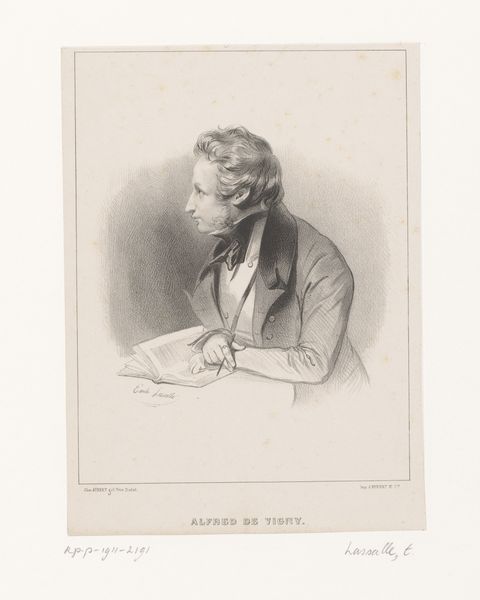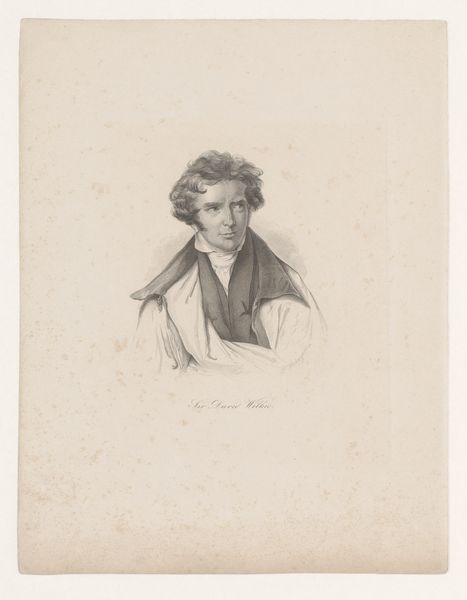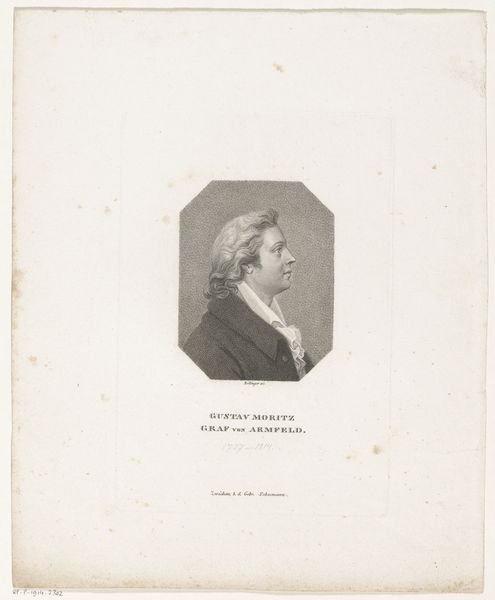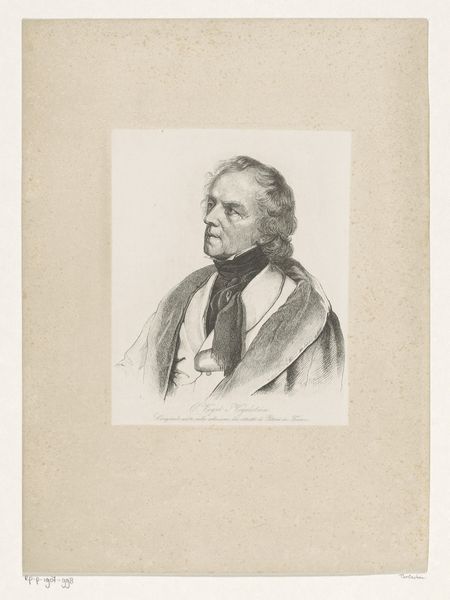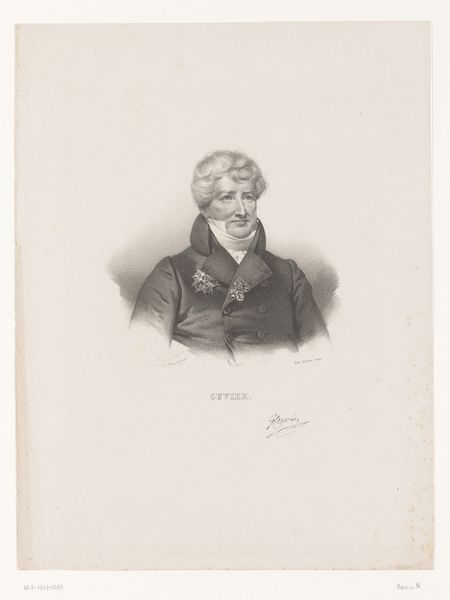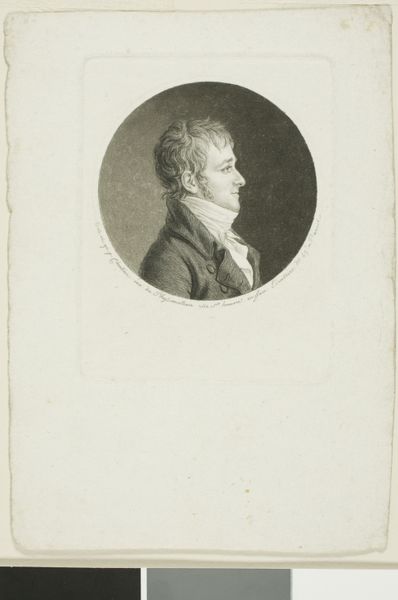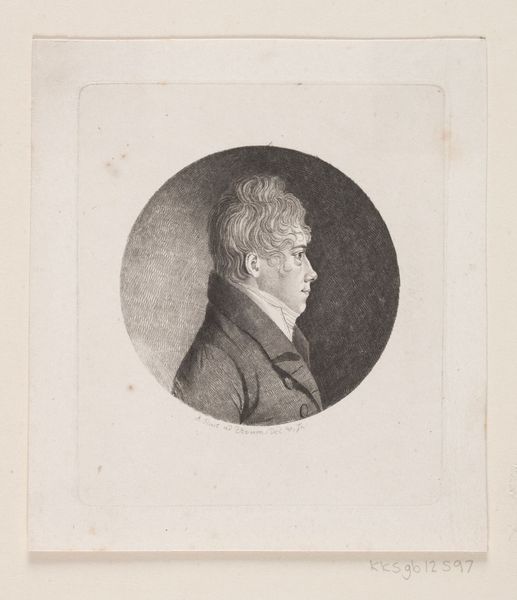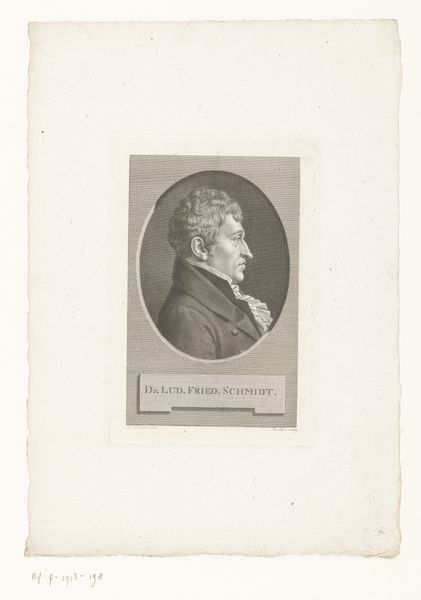
Dimensions: height 178 mm, width 140 mm
Copyright: Rijks Museum: Open Domain
Curator: Looking at this engraving, "Portret van Alfred de Vigny," likely created between 1807 and 1899 by F. Richter, I am struck by its careful depiction of social standing and romanticized expression through the print medium. Editor: I’m immediately drawn to the image’s almost melancholy feel. There’s a contemplative weight, a sense of introspective solitude even though it’s a portrait. The book further hints at thoughtfulness. Curator: The choice of engraving, a process involving meticulous labor and reproduction, is interesting. The lines, the controlled gradations—it speaks to the production of images intended for wide circulation and consumption, influencing ideas of the subject at the time. The labor in producing such likeness is immense, a contrast between artistic craft and mechanical reproduction. Editor: Absolutely. And the figure's presentation contributes. We have Vigny, pen in hand at his book—the portrait is filled with writerly symbols. He appears lost in thought, the epitome of the Romantic poet grappling with the complexities of existence. Curator: How fascinating. But I'd also note the print itself—likely reproduced at scale—moves the discussion about this man and his symbolic importance beyond elitist gallery spaces into accessible domestic and communal settings through reproducibility. Think of the consumption process as democratized access! Editor: Fair point. While prints did allow for wider distribution, they were still objects carrying cultural cachet. Look at his refined silhouette and carefully crafted, controlled facial expression. It represents him not simply as a person, but almost as an idealized archetype, embodying romanticism's focus on emotion and individualism. He's less Vigny the individual and more a representation *of* Romantic ideals. Curator: And there are social implications even here. We might analyze what the proliferation of images such as this says about 19th-century print culture: how they constructed celebrity, commodified authorship, and democratized aesthetic engagement. Editor: Precisely. What at first appears to be a straightforward image reveals a rich layering of historical significance and aesthetic consideration. The careful combination of traditional and emerging cultural narratives makes for an evocative symbolic tableau. Curator: Yes, a convergence of aesthetic practice, historical representation, and mass culture… intriguing considerations sparked from this piece, definitely! Editor: Indeed. Who knew a simple portrait could say so much?
Comments
No comments
Be the first to comment and join the conversation on the ultimate creative platform.
